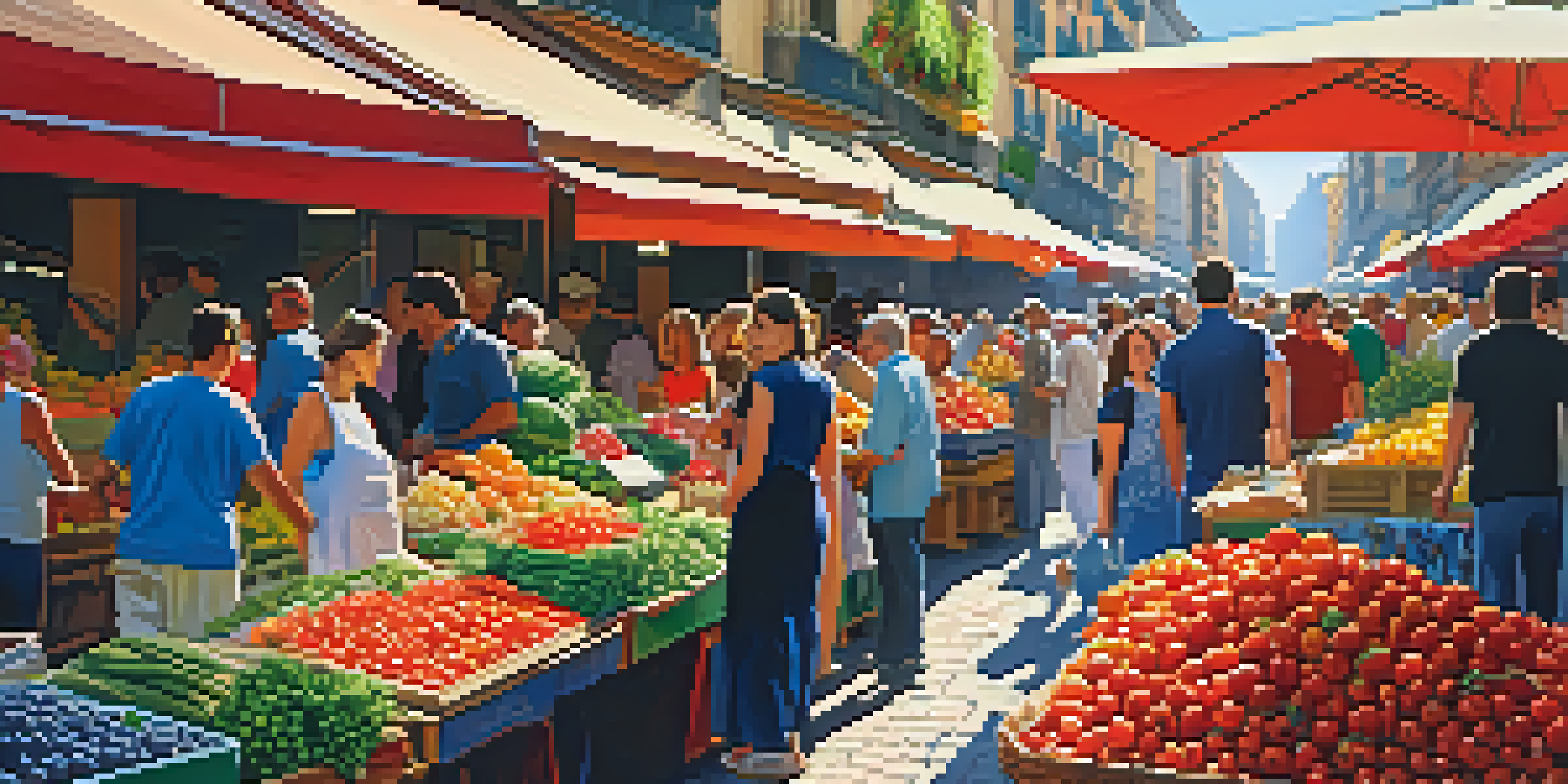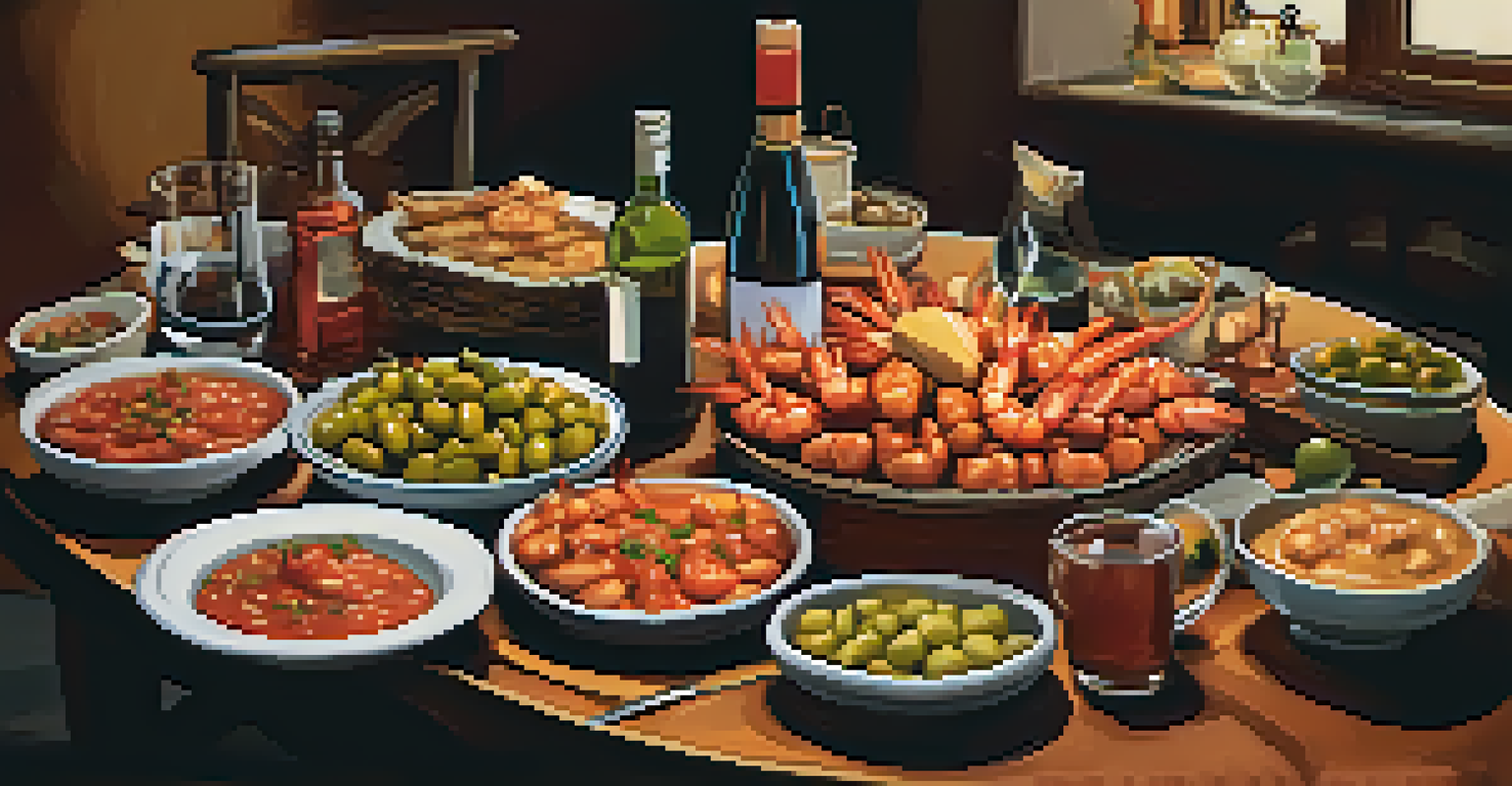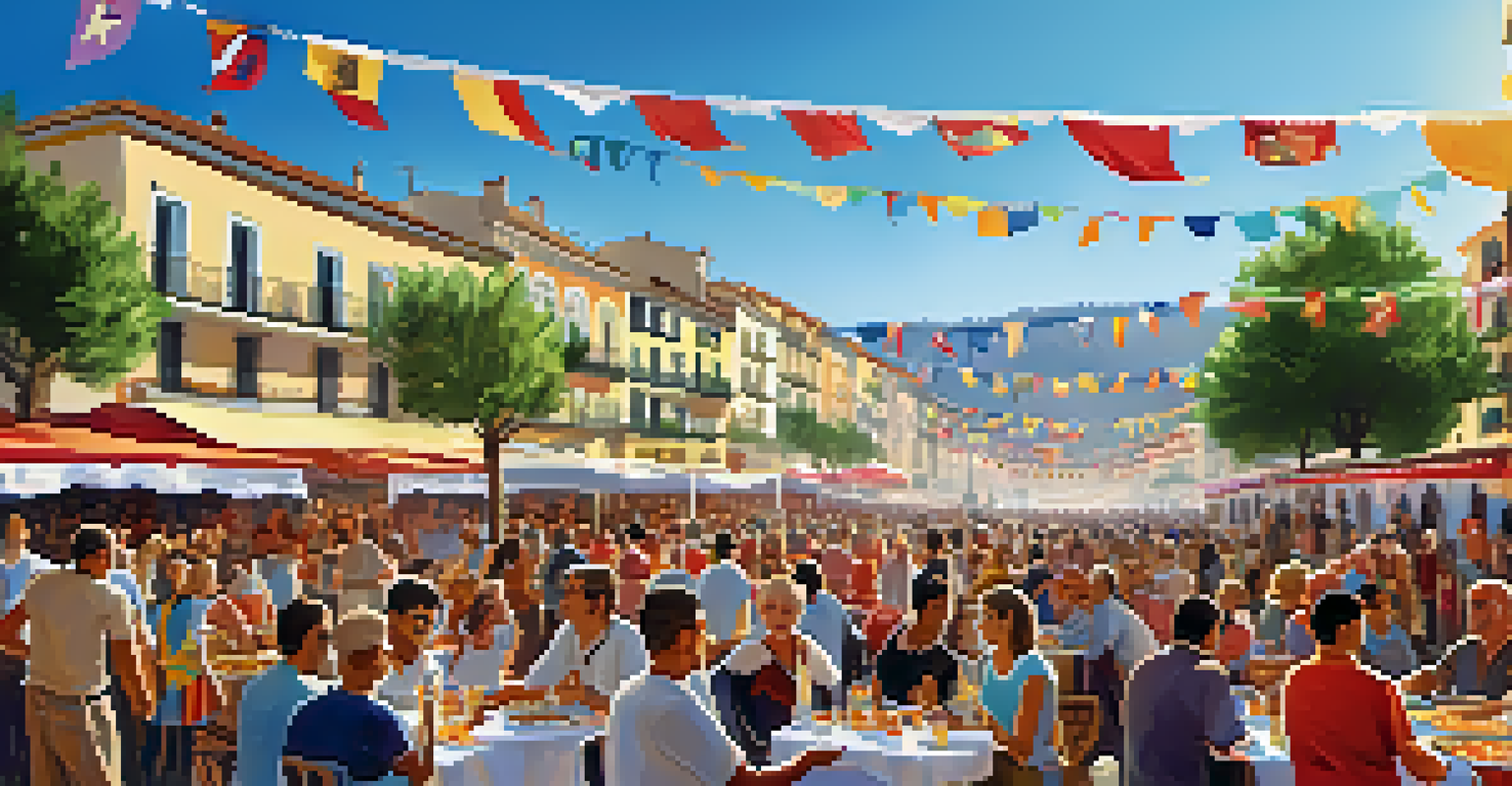Exploring Spanish Cuisine: A Cultural Exchange Experience

The Heart of Spanish Cuisine: Fresh Ingredients Matter
Spanish cuisine thrives on the use of fresh, locally-sourced ingredients. Markets overflow with vibrant fruits, vegetables, and seafood, showcasing the country's rich agricultural heritage. Imagine strolling through a bustling market in Barcelona, where the scent of ripe tomatoes and fresh herbs fills the air, inviting you to explore deeper.
Food is our common ground, a universal experience.
These ingredients aren't just for show; they play a crucial role in defining the flavors of Spanish dishes. Whether it's the spicy kick of chorizo or the sweetness of ripe peaches, each ingredient contributes to a vibrant culinary tapestry. This focus on fresh produce not only celebrates the land but also embodies the Spanish philosophy of enjoying simple, quality foods.
Moreover, many traditional Spanish recipes have been passed down through generations, reflecting a deep respect for cultural heritage. As you savor each bite, you're not just enjoying a meal; you're experiencing a piece of history and tradition that connects people across time and space.
Regional Varieties: Spain's Culinary Diversity
Spain's regions are like different chapters in a cookbook, each with its own unique flavors and specialties. From the seafood-rich dishes of Galicia to the hearty stews of Andalusia, the diversity is astounding. Traveling through Spain is akin to embarking on a culinary road trip, where each stop offers a new taste adventure.

Take paella, for example, a dish that varies from Valencia's traditional seafood version to a meat-lover's delight in Madrid. Each variation tells a story about the local culture and available ingredients, showcasing how geography influences cooking styles. This regional pride in cuisine makes every meal a celebration of local identity.
Fresh Ingredients Define Spanish Cuisine
Spanish dishes thrive on fresh, locally-sourced ingredients that enhance flavors and celebrate cultural heritage.
Exploring these regional differences not only satisfies your palate but also enhances your understanding of Spanish culture. Each dish is a reflection of the land it comes from, revealing insights about the people and their customs, making it a true cultural exchange experience.
Tapas: The Art of Sharing Food
Tapas are more than just small plates; they're a social phenomenon in Spain. Sharing tapas embodies the Spanish spirit of community and togetherness, encouraging conversations and laughter over a variety of flavors. Imagine gathering with friends at a lively bar, sampling everything from patatas bravas to gambas al ajillo.
Cooking is like love. It should be entered into with abandon or not at all.
This style of dining promotes a relaxed atmosphere, allowing you to try multiple dishes without the commitment of a full meal. It's an invitation to explore, taste, and enjoy the moment. Each bite offers a new discovery, making it an exciting culinary experience.
Moreover, tapas can vary widely by region, reflecting local tastes and traditions. This adaptability means that every tapas experience is unique, allowing you to dive deeper into the culinary customs of different parts of Spain while fostering connections with those around you.
Savoring the Sweet Side: Spanish Desserts
No exploration of Spanish cuisine would be complete without indulging in its delightful desserts. From flan to churros, each sweet treat has a story to tell. Imagine biting into a warm churro, dipped in rich chocolate, as you stroll through a sun-soaked plaza—it's pure bliss.
Spanish desserts often showcase local ingredients, such as almonds in tarta de Santiago or fresh fruits in flan. This use of wholesome ingredients not only enhances flavors but also reflects the Spanish ethos of celebrating simplicity. Each dessert is a reminder that sweetness can be found in both the food and the moments shared around it.
Regional Diversity Enriches Flavors
Each region of Spain offers unique culinary experiences, reflecting local cultures and traditions through distinct dishes.
Additionally, many of these desserts have historical roots, often tied to festivals and celebrations. Enjoying Spanish desserts is not just about satisfying your sweet tooth; it's about participating in a cultural tradition that has been cherished for generations.
The Influence of Spanish Cuisine Worldwide
Spanish cuisine has made its mark on the global culinary scene, influencing countless chefs and home cooks alike. Dishes like paella and tapas have crossed borders, inspiring variations in kitchens around the world. As you dine in a restaurant that serves these dishes, you’re part of a larger culinary conversation that spans continents.
The globalization of food means that Spanish flavors are now enjoyed in places far from their origins. For instance, you might find fusion tapas in New York that blend traditional Spanish ingredients with local flavors. This cultural exchange enriches the culinary landscape, making it a vibrant blend of tastes and traditions.
Moreover, this global appreciation for Spanish cuisine encourages a deeper understanding of its cultural significance. As people explore these flavors, they also learn about the history and customs that shape Spanish cooking, fostering a greater appreciation for culinary diversity.
Celebrating Food Festivals: A Culinary Extravaganza
Spain is home to numerous food festivals that celebrate its rich culinary heritage. Events like La Tomatina in Buñol and the Feria de Abril in Seville showcase the joyous connection between food, culture, and community. Attending these festivals is like stepping into a vibrant tapestry of flavors, sounds, and traditions.
At these festivals, food takes center stage, with locals and visitors alike indulging in traditional dishes, cooking demonstrations, and live entertainment. Imagine the excitement of tasting freshly made paella right from the pan, surrounded by the sounds of laughter and music—it’s a feast for the senses.
Food Festivals Celebrate Community
Spain's vibrant food festivals create a joyful atmosphere where people connect through shared culinary traditions and experiences.
These events not only highlight the best of Spanish cuisine but also bring people together. They create opportunities for cultural exchange, where everyone can share their love for food and learn from one another, making it a truly enriching experience.
The Role of Spanish Cuisine in Cultural Identity
Food is an essential part of cultural identity, and Spanish cuisine is no exception. It reflects the history, geography, and traditions of the Spanish people. Each dish tells a story, whether it’s the Moorish influence in paella or the agricultural roots of gazpacho, connecting people to their heritage.
Moreover, cooking and sharing meals is often a family affair in Spain, fostering strong bonds and traditions. Think of the family gatherings where recipes are passed down, each generation adding its own twist while maintaining the essence of the original dish. This practice not only preserves culinary traditions but also strengthens familial connections.

As you explore Spanish cuisine, you're not just tasting food; you're engaging with a culture that values community, history, and the joy of sharing. It's a reminder that through food, we can celebrate our differences while finding common ground in our love for delicious meals.